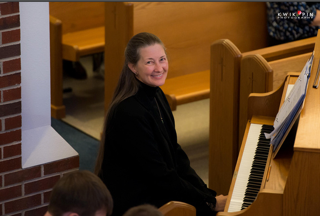2018 Professional Reading Program
Developing Excellence In Our Studios
PRP Chair: Kathryn Hammer, NCTM
Seminar leader: Dr. Grace Asquith, NCTM
The Professional Reading Program for 2018 - 2019 will explore the development of expressive playing in music-making. Through a variety of resources, expression can be refined by recognizing clues in the notation, instilling practice habits aimed at crafting musical interpretations, and by challenging our definition of music expression. While these book selections will offer a multitude of concepts, the goal will be to creatively apply the ideas in our studios as we prepare our students for performance and enhance their connection with the audience through their music.
Reading list:
- Sound in Motion, A Performer’s Guide to Greater Musical Expression by David McGill. Indiana University Press, 2007.
David McGill’s orchestral experience with countless conductors and instrumental colleagues provides a solid foundation for practical suggestions for interpreting music notation to understand the composer’s intent. Read why some interpretations are better choices than others. Musical examples will be familiar to all musicians.
2. The Musician’s Way by Gerard Klickstein. Oxford University Press, 2009.
Gerald Klickstein has assembled numerous resources, problem-solving strategies, and habits of excellence to direct the reader towards a goal of sharing an emotional relationship with the audience. Artists who connect easily with listeners are musically well prepared; Klickstein offers several chapters with effective practice ideas.
3. Bringing Music to Life by Barry Green. GIA Publications, 2009.
Author Barry Green explores how musicians can use the inspiration of music to connect with audiences. Many chapters includes activities to experience such a shift in performance attitude.
Additional resources:
- Interpreting Music by Lawrence Kramer. University of California Press, 2010.
Textbook in nature, Chapters 12 - 15 may be of interest in a deeper meaning of “interpreting” music. Analysis of Debussy’s Prelude, “Voiles” from Book I (Ch 13) and Chopin’s Mazurka Op, 33, #4 (Ch 14).
2. If I Understood You, Would I Have This Look on My Face? by Alan Alda. Random House, 2017. Communication is most effective when one is fully engaged in responsive listening. Humorous anecdotes accompany the text.
3. Toward Center, The Art of Being for Musicians, Actors, Dancers, and Teachers by James Jordan. GIA Publications, 2010.
Focus is on the individual understanding of self and finding one’s center in order to transfer the communications music to others.

PRP Presenter, Dr. Grace Asquith, NCTM, enjoys a multifaceted schedule including piano teaching, adjudicating, composing and performance. She is the Artistic Director and Co-Founder of Chamber Ensemble con Grazia, which is celebrating its 10th Anniversary during 2018. As a Senior Examiner for over 10 years with the Royal Conservatory of Music, she evaluates music students in Canada and throughout the US. In Colorado, Grace served as CSMTA President during the 2010 - 2012 term.
